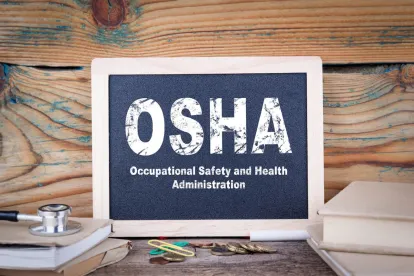Senior Department of Labor officials recently outlined the Occupational Safety and Health Administration’s (OSHA) enforcement priorities at an American Bar Association conference regarding occupational safety.
Speakers included Doug Parker, head of OSHA; Kimberly Stille, the director of the Directorate of Enforcement Programs; and Seema Nanda, the top lawyer for the Department of Labor. These officials discussed OSHA’s current expansion and the regulations OSHA is emphasizing as well as its other enforcement and regulatory activities.
OSHA seeks to increase enforcement activities based in part on its recent hiring. In 2022, OSHA added more than 200 new compliance officers, bringing the total to over 900. This means that one in every five inspectors are new. With more personnel, OSHA is hoping to increase the number of inspections it conducts regarding its enforcement priorities as opposed to responding to accidents or complaints.
A repeated theme of several speakers was an increased emphasis on heat illnesses. While there is currently no specific heat regulation, OSHA indicated it would aggressively inspect workplaces, particularly those in construction and other outdoor employment, for this issue. Heat is also the subject of current rulemaking, and a heat regulation has been in the works since 2021.
Other enforcement priorities include ensuring that personal protective equipment is of proper fit as well as trenching. OSHA defines trenching as, “…a narrow excavation (in relation to its length) made below the surface of the ground.” Compliance officers have been instructed to stop and inspect any work site they pass with trenching ongoing. Further, any accident involving trenching and a fatality will be scrutinized for potential criminal liability on the part of the employer under both federal and state laws. If trenching protection is on-site and not in use, this will be a significant factor in OSHA’s compliance review.
Several other enforcement mechanisms were emphasized, including:
-
A recent “instance by instance” penalty memorandum issued to Regional and Area Offices directing them to consider citing employers for each instance of an alleged violation (as opposed to grouping them) in relation to certain regulations, including fall protection, trenching safety, machine guarding, respiratory protection, confined spaces, and lockout and tag-out programs. This new policy will dramatically increase OSHA proposed penalties in some cases. For more information on this new policy, see a recent Steptoe & Johnson alert.
-
An emphasis on piercing the corporate veil to hold individuals liable for fines in circumstances where OSHA perceives the corporate form is being abused by the employer.
-
Corporate or enterprise-wide settlements as a means to require broader change within multiple workplaces of the same employer.
-
A new emphasis on seeking preliminary injunctions or temporary restraining orders in whistleblower cases where OSHA wants to immediately test whether certain alleged misconduct should be restrained.
-
A revised Severe Violator Enforcement Program, making it both easier to be identified as a severe violator and harder to get off the list once identified.
Along with enforcement priorities, OSHA is also busy with new or revised regulations. These cover a wide variety of issues, including heat illnesses, workplace violence, infectious diseases, lockout and tag-out programs, and emergency response, as well as clarifying the rights of worker involvement during OSHA inspections. These and other new regulations are expected to make progress under the current administration this year.
While one speaker stated that the Department of Labor does not believe that OSHA can “enforce” the employer community into regulatory compliance, OSHA’s forward-leaning posture on its many initiatives indicates heightened enforcement activity for the foreseeable future. Consistent attention to existing and developing OSHA regulatory requirements is a must to avoid compliance pitfalls.




 />i
/>i
